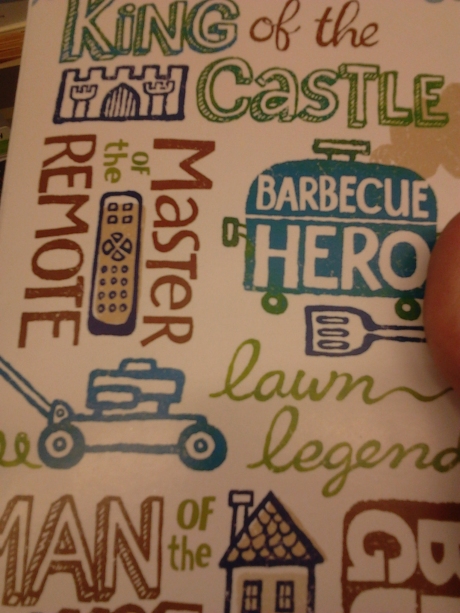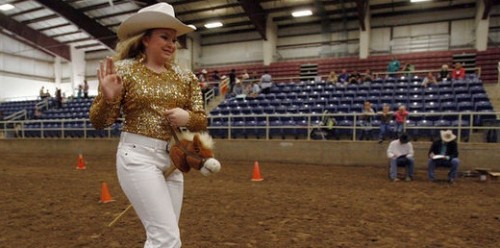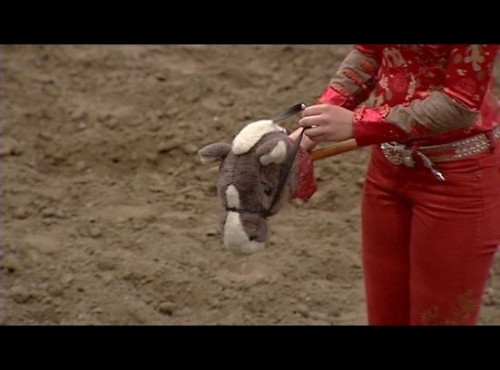It’s almost Father’s Day, which means it is time for the greeting card business to make tons of money. It also means it’s time for us to visually see the standard narrative about gender, masculinity, and fatherhood. Looking at mass commercial products like greeting cards is an especially useful venue: the greeting card companies, wanting to make money like good capitalists, will sell products that have the greatest widespread appeal. Thus, they will sell the most popular representations of gender, masculinity, and fatherhood.
From a brief perusal of a NYC chain store greeting card aisle, I found plenty of cards that shed light on these representations. I want to focus, though, on two: middle-aged masculinity and the different representations of daughters and sons.
There were plenty of cards like this one, that capture many of the stereotypical narratives about fatherhood, and middle-aged masculinity more broadly:
(Apologies for the poor picture quality, a nearby employee didn’t seem thrilled with my picture-taking).
Here, we see man/father as: head of the household (twice, and once as dictator – king): cooks, but only on the grill; lawn mowing expert; controller of the remote/TV watcher; and “big guy.” What’s not on there? Anything about love for children, caring, affection, equitable distribution of household duties (if part of a couple), etc.
Almost all of the love and affection, though, was saved for cards specifically marketed as ‘Dad from daughter.” Most of the cards in this picture were love-centric and labeled as such:
There were a few rare cards simply marked as ‘Dad’ that include themes of love and/or affection, such as this one:
The cards marked ‘Dad from son,’ however, mostly consisted of attempts at humor involving sports (especially golf), building things (or the lack of ability to do so), and, well, farts:
Obviously, we can’t draw too much from the greeting cards in one store, but in this store, at least, there was only one card explicitly marked for sons that primarily communicated feelings of love and affection; all of these were either marked for daughters to give or did not specify what gender should give them. Pairing this with the kinds of fatherly masculinity represented by the cards, Father’s Day cards are sold through the use of traditional gender representations.
Note: all photos licensed under a Creative Commons Attribution-NonCommercial-ShareAlike 3.0 Unported License.
———————-
John McMahon is a Ph.D. student in Political Science at the City University of New York Graduate Center, where he also participates in the Women’s Studies Certificate Program. He is interested in post-structuralism, issues relating to men and feminism, gendered practices in international relations, gender and political theory, and questions of American state identity. John blogs at Facile Gestures, where this post originally appeared.
If you would like to write a post for Sociological Images, please see our Guidelines for Guest Bloggers.














